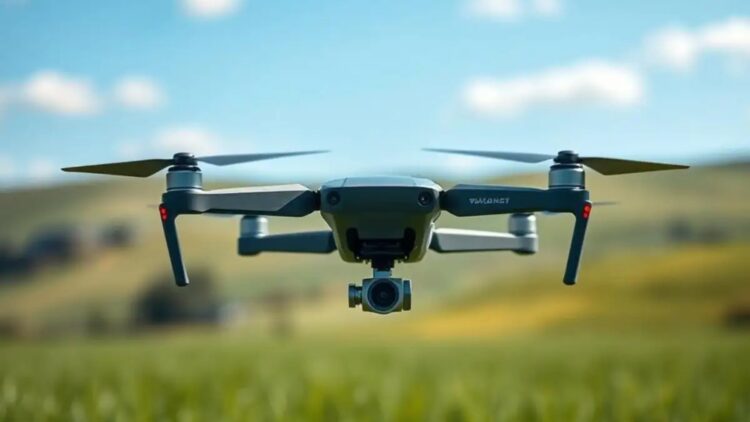The advances in photovoltaic technology are evident, making it the most widely used type of renewable energy source. The installation of solar panels is increasingly common not only in homes but also in public services and major power grids. It has improved in both engineering and materials, as well as in large-scale expansion. Traditional photovoltaic cells have been surpassed with the advent of tandem and perovskite solar cells. So far, this energy has been limited to powering batteries to supply homes and buildings.
However, the company Skydweller Aero, together with the French defense agency Thales Group, has developed a drone that runs entirely on solar energy. According to Todd Evans, Commander of the Naval Air Warfare Center Aircraft Division (NAWCAD), this is a demonstration that NAWCAD is capable of providing the material the fleet needs. And this drone has proven to have an autonomy of 9 days in a nonstop flight of 73 hours. It is capable of flying during the day and at night thanks to the 17,000 solar cells that make it up, and it is intended to be one of the most “valued” weapons in defense.
Photovoltaic Energy
It could be said that photovoltaic energy is one of the most widely used renewable energies in the world. It is also one of the most versatile, as it can supply energy to a home, buildings, or an entire power grid. Since its usage began to become widespread, its technology has been continuously improving, enhancing, among other things, its efficiency. Both its engineering, the materials, and large-scale expansion have been made possible thanks to these gradual improvements.
What were once panels functioning with silicon-based cells have been replaced by bifacial panels, tandem solar cells, and perovskite solar cells. As if these advances were not enough, they have also managed to reduce both manufacturing and installation costs, making it more accessible for homes, businesses, and even governments.
New Uses for Solar Energy
Solar energy is certainly one of the reasons why the use of fossil fuels is being increasingly avoided (although there is still a long way to go). That is why more and more is being invested in its use and in the possible different applications it could have.
A New Solar Drone
Yes, you read that right. It was hard not to think that this would become a reality sooner rather than later. To date, the use of photovoltaic energy has been limited to powering batteries that supply homes and buildings, but a step further has been taken. The union of the American company Skydweller Aero and the French defense agency Thales Group has led to the development of a drone powered by solar energy. It is about a maritime surveillance drone that carried out its first test flight last August, reporting very promising results.
According to the statements of Commander Rear Adm. Todd Evans, “This demonstration is an excellent example of how [Naval Air Warfare Center Aircraft Division] (NAWCAD) partners with industry to deliver what the fleet needs. It also reflects the technical depth of our workforce and our ability to translate ideas into capability.” The test lasted 9 days, with 73 hours of continuous flight, during which it proved capable of reaching 45,000 feet. During the day, it can reach an altitude of between 24,600 and 34,400 feet, and at night it drops to 4,900 and 9,800 feet to save energy. These capabilities have been made possible thanks to the 17,000 solar cells that make up its design.
This new design will be one of the new members of the defense department, as long as it continues to pass the necessary tests.
Did you know that China has installed a photovoltaic panel on Mount Everest?
